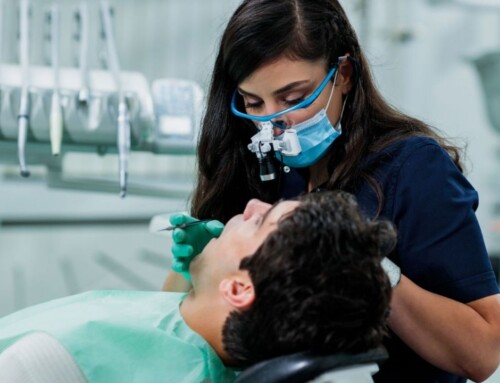
Do you notice any pain or discomfort at your wisdom-tooth extraction site? Well, you’re likely dealing with a dry socket.
What is a Dry Socket?
A dry socket is a condition that can take place after having a tooth extracted. In a nutshell, when your tooth is removed, a blood clot forms in the empty socket. This blood clot is crucial as it protects the bone and nerves underneath.
A dry socket occurs when this blood clot either doesn’t form or is dislodged. Dry sockets are more common than you might think. In fact, they occur in about 2-5% of all tooth extractions, and they’re more common among wisdom teeth extractions on the bottom jaw.
How is Dry Socket Caused?
Dry socket is still an area of interest for researchers. Researchers believe that various factors might be involved, such as:
- Trauma caused at the surgical site after a difficult wisdom tooth extraction.
- Bacterial contamination of the socket.
Risk Factors
Habits that can increase your risk of developing a dry socket:
Smoking: Tobacco in cigarettes may slow down the healing process and contaminate the wound site.
Oral contraceptives: High estrogen levels from contraceptives can affect your body’s healing process.
Complicated extractions: If the tooth is difficult to remove, there’s a greater chance the blood clot will dislodge.
Previous dry sockets: If you’ve had a dry socket before, you’re more likely to have one again.
Improper at-home care: Not following the proper post-operative instructions can also lead to dry socket formation.
Symptoms of a Dry Socket
- Bad breath
- Foul taste in the mouth
- Bad breath
- Increased pain at the extraction site
- Partial or complete loss of the blood clot at the extraction site
- Pus or drainage from the socket
- Visible bone in the socket
- Widening of the gum
Treatments for Dry Socket
1. Rinse With Salt Water
We recommend rinsing your mouth with saline water within the 48-hour time interval after removal. This might help avoid dry sockets in the first place. A study published in Evidence-Based Dentistry showed that patients who didn’t use salt water rinse were more likely to get dry sockets than those who did. Try rinsing twice a day to prevent dry sockets.
2. Use a Cold Compress
Use an ice pack on the affected side to reduce the discomfort. Instead of holding the cold compress inside your mouth, apply it on the outside of the jaw. Leave the compress for ten minutes and then take a ten-minute break. Don’t try to eat ice or freezing water directly as they may increase discomfort.
3. Avoid Straws and Cigarettes
Straws and cigarettes can cause dry sockets because they can dislodge the blood clot in the socket. If you’re using a straw, suck on it very gently. Avoid smoking for at least 48 hours after removal to give your socket time to heal.
4. Medications
You might need medication to manage the pain of dry sockets. Over-the-counter pain relievers like ibuprofen (Advil, Motrin IB) and acetaminophen (Tylenol) can help. However, if you’re in a lot of pain, your dentist might prescribe a more potent pain reliever. Antibiotics may also be necessary if the dry socket becomes infected.
5. Dressing the Socket
When you visit a dentist, they may suggest dressing the socket. A dressing can be placed over the socket to help with pain and speed healing. The dressing will need to be replaced every few days.
Your Dentist in Charlotte Uptown
If you have a dry socket and require a dentist in your area, Dr. K is here to help you out. He will first look at your extraction site before offering treatments suitable for your condition. If this sounds like a plan, book an appointment via District Dentistry Charlotte‘s page or call us on 704-910-5006.





